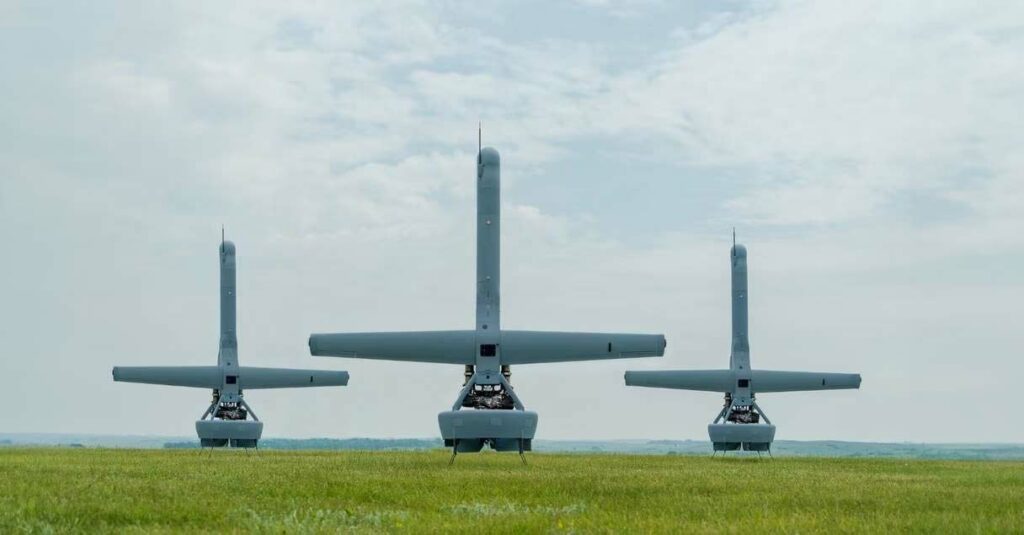
Shield AI, a California-based defense technology company, is launching a new drone swarm capability called V-Bat Teams. The technology could be used for the US Department of Defense’s Replicator program. Powered by artificial intelligence, V-Bat Teams are designed to operate autonomously in high-risk environments, without the need for instructions or GPS guidance. They could revolutionize military operations by enabling the mass deployment of low-cost autonomous drones.
California-based defense technology company Shield AI recently unveiled a revolutionary technology dubbed “V-Bat Teams”. This autonomous drone swarm capability could well be the answer to the needs of the US Department of Defense, particularly as part of its Replicator program. In this article, we explore in detail the V-Bat Teams technology, its potential applications, and the implications of its use in the defense field.
V-Bat Teams technology
V-Bat Teams technology is the result of experiments carried out by Shield AI in collaboration with the Air Force’s innovation unit, AFWERX. It is based on the company’s artificial intelligence pilot software, called “Hivemind”. The aim of these drone teams is to operate autonomously in high-risk environments, without the need for precise instructions, GPS guidance or communications. This autonomy is made possible by Hivemind’s advanced artificial intelligence.
Potential applications
One of the most interesting potential applications for V-Bat Teams technology is its use in the U.S. Department of Defense’s Replicator program. This program aims to deploy thousands of attritable, autonomous drones over the next two years to counter threats such as those posed by China. V-Bat teams could be a major asset in achieving this goal.
According to Brandon Tseng, co-founder and president of Shield AI, V-Bat teams would require minimal instruction from human operators, beyond determining the target or mission to pursue. However, V-Bats would still be able to notify humans as soon as they detected something that required their attention. This combination of autonomy and human surveillance could transform the way military operations are conducted.

Implications and consequences
The introduction of V-Bat Teams technology into the defense arena could have a significant impact on military strategy. Firstly, the ability to deploy swarms of autonomous drones in high-risk environments could reduce the risk to human operators. In addition, the relatively low cost of V-Bats makes them attractive, meaning they could be deployed in large numbers without compromising overall operational capability.
The technology could also be used creatively, notably as decoys to attract enemy fire and protect crewed aircraft. Finally, the use of autonomous drones could open up new possibilities in maritime surveillance, suppression of enemy air defenses, strike operations, escort missions and logistics.
The future of V-Bat Teams technology
According to Brandon Tseng, the company aims to sell V-Bat Teams technology to all branches of the US military, as well as to foreign customers. This technology could really open up a new paradigm in military operations, enabling the mass deployment of autonomous drones.
However, it’s important to note that the V-Bat teams don’t seem to fit in with the US Air Force’s vision of creating a fleet of collaborative combat aircraft. Shield AI remains open to the idea of participating in the collaborative combat drone program, but it’s clear that the V-Bats design differs from what the Air Force envisions for its AI-piloted aircraft.
Shield AI’s V-Bat Teams technology represents a major breakthrough in the field of autonomous drones. Its potential to revolutionize military operations by making them more autonomous, safer and more cost-effective is undeniable. With the ability to deploy swarms of attritable drones in hostile environments, this technology could play a vital role in strengthening national security and protecting strategic interests. As Shield AI aims to market this technology to US and foreign armed forces, it’s clear that the future of military operations could be heavily influenced by V-Bat teams.